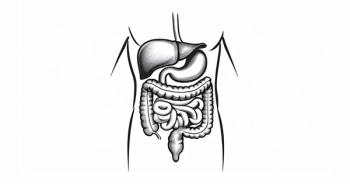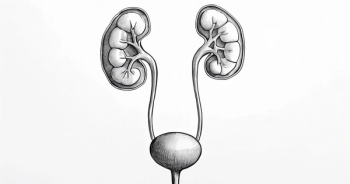
Individualized Approaches Recommended to Treat Elderly Patients with Localized HNSCC, Says Porceddu
Although paradigms for treating older patients with head and neck cancer are not well defined, advancements in targeted and immunotherapies and less toxic radiation regimens suggest that physicians can aim for a more individualized approach to treating this patient population.
Sandro V. Porceddu, MD
Although paradigms for treating older patients with head and neck cancer are not well defined, advancements in targeted and immunotherapies and less toxic radiation regimens suggest that physicians can aim for a more individualized approach to treating this patient population.
“One can speculate that we can push the boundaries of treatment,” argued Sandro V. Porceddu, MD, in his presentation during an education session at the 2016 ASCO Annual Meeting focused on challenging cases in the management of head and neck cancer (HNC).
Porceddu, who directs the radiation oncology research program at Princess Alexandria Hospital in Australia, said that making appropriate treatment decisions for elderly patients means going beyond statistical models of life expectancy and factoring into the calculation the patient’s comorbidities, functional status, social support, and treatment preferences.
Validated prognostic tools to assess comorbidities are easy to use and accessible, he noted, and include the Adult Comorbidity Evaluation 27 (ACE-27), the Cumulative Illness Rating Scale (CIRS), eprognosis.org, and the one he prefers, the Charlson Comorbidity Index (CCI).
He stressed that a patient’s functional status should be assessed independent of comorbidity: “These are two separate issues,” and functional status should involve not only patient/caregiver report of ability to perform activities of daily living (ADL), but also clinician-administered performance measures, such as assessing the patient’s gait speed with a tool like the Timed Up and Go (TUG) which he uses in his own practice.
And, finally, he added, “We know that social support is a significant predictor of morbidity in older patients.”
Definitions of the elderly differ, but the National Institute of Aging of the NIH has settled on the “young” old (65-74 years), “older” old (75-85 years), and “oldest” old (>85 years). For optimum clinical management of locally advanced squamous cell head and neck cancer (LAHNSCC), however, Porceddu said, “What we really need for planning treatment strategy are categories based on biologic age and tolerance,” which he has defined as “fit,” “intermediate,” and “frail” elderly patients.
For the fit old, clinicians can aim for standard of care, he said, and limited evidence exists in the research literature to support that choice. Elderly HNC patients are underrepresented in clinical trials, and there is currently no supportive evidence for treatment decision making for the intermediate old patient. Porceddu said these patients should be offered some compromise on standard of care. For the frail older patient, supportive care and symptom control is warranted: “The reality is, we probably don’t need any supportive evidence to make that decision for that group.”
Thus, oncology practitioners need to differentiate between patients who are simply elderly and those who are frail to customize their treatment and optimize patient outcomes. Porceddu shared with his audience one of his own cases to illustrate the point.
This 70-year-old man and former smoker presented with a painless neck lump. He had a significant past history of heavy alcohol intake and prior treatment for cirrhosis of the liver and hepatocellular carcinoma. The patient was not experiencing dysphagia, weight loss, voice change, or problems with organ function. His ECOG status was 2, and his ADL function was good. Though he was not able to drive (a measure of instrumental ADL), he had a healthy and supportive partner.
Diagnostic testing revealed a stage T2N2bM0, left, 4-cm, hypopharyngeal, p16-negative, LAHNSCC, and his hepatology specialist anticipated that the patient would develop further HCC in about 18-24 months. The patient and his wife wanted to pursue curative but nonsurgical active treatment and avoid a long course of chemoradiotherapy. The patient’s 2-year survival was estimated at 35% based on the CCI comorbidity assessment.
“We weren’t confident he could tolerate a course of radical chemoradiation (70 Gy over 7 weeks plus high-dose cisplatin),” said Porceddu, “due to his comorbidities and functional status, but he was not unwell enough for simply palliative treatment…Really it came down to an adoption of treatment that was less aggressive but would provide a balance between tumor control, toxicity, treatment compliance, and preservation of quality of life.”
Porceddu and colleagues decided on a regimen involving radical concurrent chemoradiation (55 Gy in 25 fractions over 5 weeks) with concurrent, weekly cisplatin dosed at 40 mg/m2. The patient experienced grade 2 dermatitis and grade 3 mucositis and required a nasogastric tube during the final week of treatment, however, these issues resolved. After 6 months of uninterrupted treatment, Porceddu reported that the patient is currently disease-free, his weight is stable, his ECOG status remains at 2, and he is able to continue ADL with help from his wife.
As the incidence of HPV-associated oropharyngeal cancers increases and overall demographic trends point to more elderly patients being diagnosed with cancer, oncologists can expect to see more older patients with LAHNSCC in the clinic. Porceddu stressed that advanced age alone should not be a contraindication to effective treatment:
“While treatment tolerance may differ compared with the young, there is a lack of high-level evidence that in the elderly, tumors respond differently, cancer-specific survival outcomes differ, and toxicity rates are worse.”
References:
- Porceddu SV. Management of elderly and infirm patients with locoregionally confined head and neck cancer: different strategies based on performance status and organ function. Presented at: 2016 ASCO Annual Meeting; June 3-7, 2016; Chicago, IL.









































